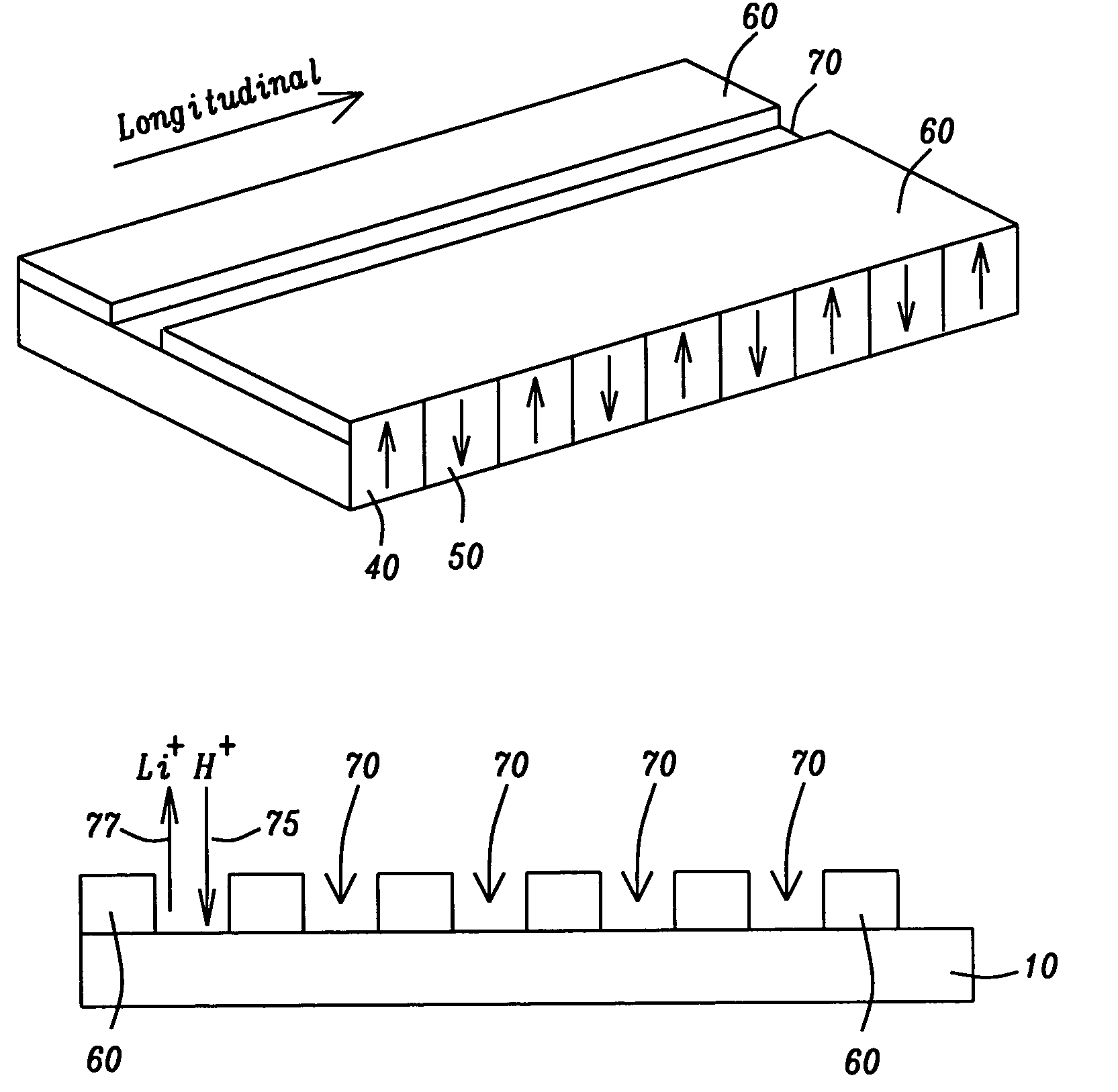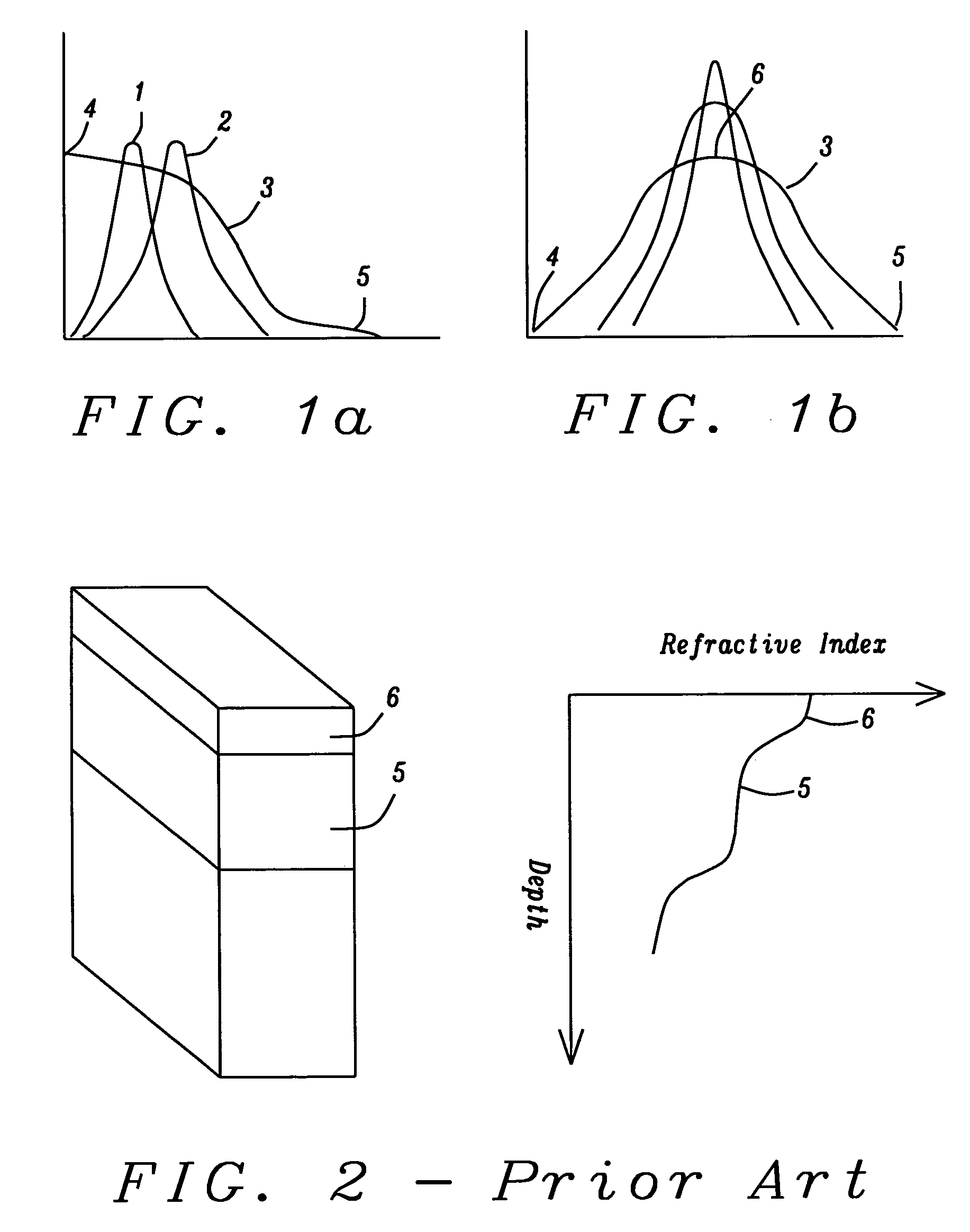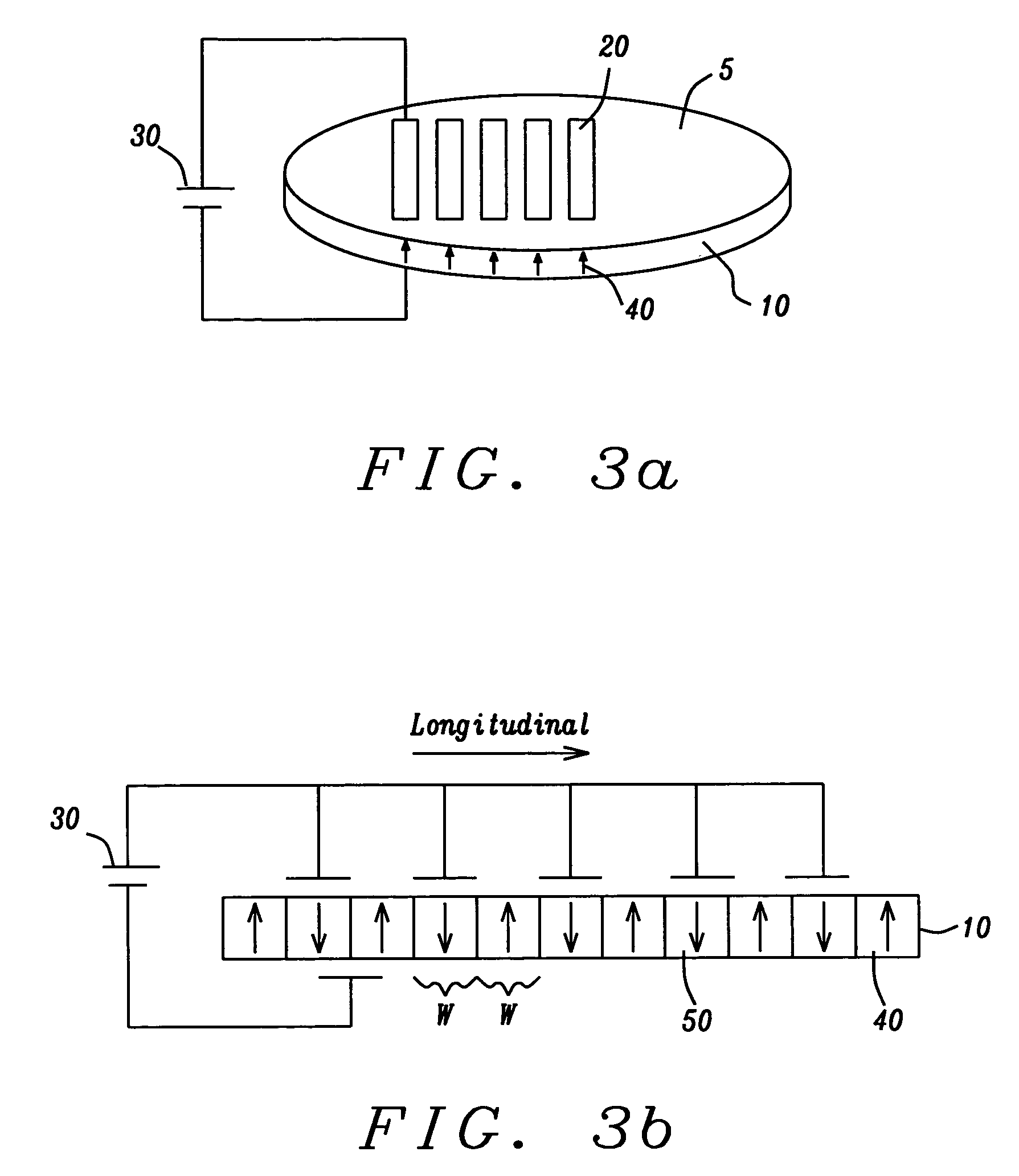High efficiency wavelength converters
a wavelength converter and high-efficiency technology, applied in the field of high-efficiency wavelength converters, can solve the problems of low conversion efficiency, inability to achieve true phase locking, and inability to allow optimal mode overlap, so as to improve the conversion efficiency of the device, increase the symmetry of the waveguide refractive index profile, and increase the overlap
- Summary
- Abstract
- Description
- Claims
- Application Information
AI Technical Summary
Benefits of technology
Problems solved by technology
Method used
Image
Examples
Embodiment Construction
[0044]The preferred embodiments of the present invention teach a method of forming a buried waveguide having a symmetric refractive index profile within a periodically domain reversed nonlinear ferroelectric crystal without damaging the optical properties of the crystal. The symmetric form of the waveguide index profile allows the input and polarization waves to overlap for an efficient energy transfer and promotes an optimal cross-section of the output wave. The resulting device can be advantageously used for a wide range of optical wavelength processing, including optical frequency conversion.
[0045]Referring first to FIG. 1a, there is shown an example of poor overlap between two modes within a waveguide region, a fundamental input radiation mode (1) and a resulting mode produced by the nonlinear response of the crystal (2). The poor overlap is a result of the non-symmetric refractive index profile (3) of the waveguide region, which is highest at the crystal surface (4) and lowest ...
PUM
| Property | Measurement | Unit |
|---|---|---|
| thickness | aaaaa | aaaaa |
| thickness | aaaaa | aaaaa |
| width | aaaaa | aaaaa |
Abstract
Description
Claims
Application Information
 Login to View More
Login to View More - R&D
- Intellectual Property
- Life Sciences
- Materials
- Tech Scout
- Unparalleled Data Quality
- Higher Quality Content
- 60% Fewer Hallucinations
Browse by: Latest US Patents, China's latest patents, Technical Efficacy Thesaurus, Application Domain, Technology Topic, Popular Technical Reports.
© 2025 PatSnap. All rights reserved.Legal|Privacy policy|Modern Slavery Act Transparency Statement|Sitemap|About US| Contact US: help@patsnap.com



